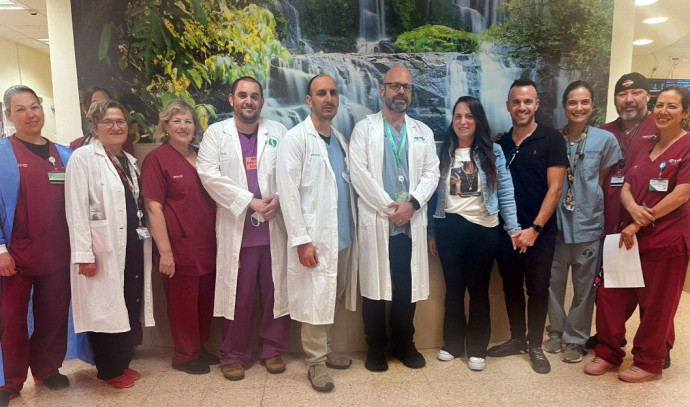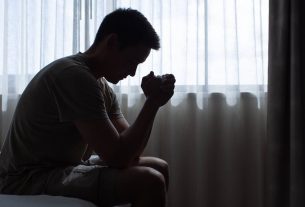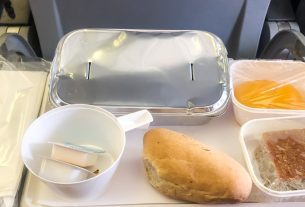An extremely rare autoimmune syndrome first described a century ago that was triggered by taking certain medications caused the top skin layer of an Ofakim woman to peel off and die and endangered her life. Fortunately, she was saved by doctors at Soroka-University Medical Center in Beersheba.
Etti Mor-Yosef, a mother of three in her 40s who resides in Ofakim was diagnosed with Stevens-Johnson Syndrome (SJS), named for American pediatricians Dr. Albert Mason Stevens and Dr. Frank Chambliss Johnson who jointly published a description of the disorder in the American Journal of Diseases of Children in 1922. It is also known as Lyell’s syndrome.
Stevens-Johnson syndrome (SJS) is a rare, serious disorder of the skin and mucous membranes; while it is genetic, environmental factors might cause the gene to be triggered. It’s usually a reaction to medication that starts with flu-like symptoms, followed by a painful rash that spreads and blisters. Then around 10% of the top layer of affected skin dies, sheds and begins to heal after several days. An ever more severe form of the condition is called toxic epidermal necrolysis (TEN), which involves more than 30% of the skin surface and extensive damage to the mucous membranes.
Early signs of SJS include a sore throat and mouth, fever, burning eyes, and fatigue, followed by unexplained widespread skin pain, a red or purple rash that spreads, and blisters on the skin and mucous membranes of the mouth, nose, eyes, and genitals. Many cases of SJS happen in children and adults younger than 30 years old, but it also occurs in others, especially the elderly. More cases of SJS occur in females than males.
Medications most likely to cause it include antibacterial sulfa drugs, anti-epileptic drugs, non-steroidal anti-inflammatory drugs, certain antibiotics, and allopurinol used to treat gout and kidney stones. It can’t be prevented because there’s no way to know before taking the drugs that one could have an adverse reaction to them.
A woman faces close brush with death from genetic disease
Mor-Yosef was referred to Soroka’s emergency department after suffering a rash and shortness of breath. In a short time, the skin condition worsened, and her condition was life-threatening.
A multidisciplinary team that included intensive-care doctors, dermatologists, and ophthalmologists diagnosed that it was SJS and began the appropriate treatment. The condition requires hospitalization to prevent further complications. The recovery is long and difficult and can take several weeks to several months depending on the severity of the condition and when treatment begins.
Dr. Amit Frankel, director of the unit for the detection and management of patients at risk and a senior physician in the general intensive-care department said “Etti was referred in a serious condition and was resuscitated within a short time. Immediately after she was diagnosed with the rare syndrome, we conducted a comprehensive literature review to ensure that you will receive the most advanced and accurate treatment. The syndrome is so rare that the medical literature as well as therapeutic experience is very limited. After reviewing the literature, a special drug was ordered from the hospital pharmacy, and on the same day, we started to give it to her. She had to be in a special isolation room,” he recalled.
SJS is life-threatening and even today is still accompanied by high mortality and disability rates, added Frenkel. “The syndrome usually develops within a few hours, in most cases following exposure to the drug and includes severe skin damage, similar to a burn, that appears on large areas of the body’s skin, as well as damage to the mucous membranes. There is no doubt that the cooperation among several factors from different fields – dermatology, ophthalmology, anesthesia and others brought a successful treatment.”
Mor-Yosef said gratefully: “A huge thank-you to the medical and nursing staff in Soroka who fought for my life. Only after my condition improved did I realize the magnitude of their efforts. Fortunately, I ended up in good and safe hands. They were my messengers who fought for my life together with me, they were there for me in critical moments. and they didn’t leave me for a moment.”



